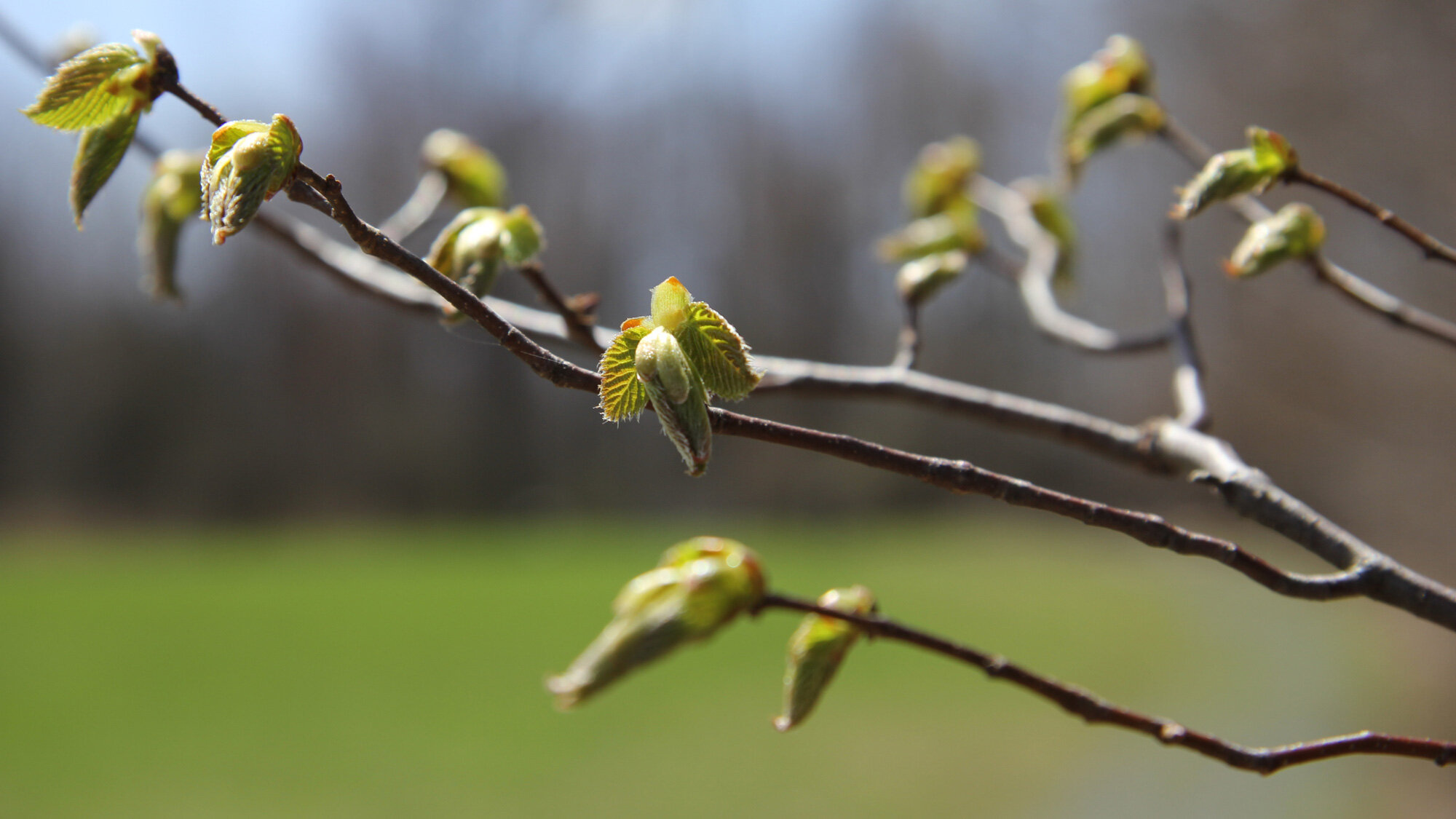My Phenology Diary
Last updated April 27, 2020
The best times of the year are often the transitions between seasons, filled with anticipation of changes to come, and a touch of sadness at the end of the season that was. For me, and probably for a lot of Central New Yorkers, no season is more welcome than spring. Some of us look forward to baseball season or a favorite spring holiday, but I would bet that most people are longing for signs of spring in the natural world: warmer weather, more daylight hours, the return of favorite song birds, trout running in the creeks, and a more colorful landscape as the browns and grays of winter give way to the greens of new leaves and the yellows, purples, and pinks of flowers blooming.
An entire field of science is devoted to the study of these seasonal changes in life: phenology, a word which comes from the Greek words phaino—meaning to appear or come to light—and logos, to reason or study. Phenology is sometimes called the science of appearance, comprising the study of things like when buds break, flowers bloom, leaves change color, and birds migrate, and how the timing of those cycles is cued by daylight and weather. Phenological changes are thought to be a sensitive indicator of climate change, and researchers are very interested in learning how climate change is altering the timing for individual species and for ecosystems, with potential timing mismatches emerging among dependent species.
One of the best things about phenology is that anyone can participate, as a citizen scientist. At the Cayuga Nature Center, we have created a trail of five trees that we’ve marked for phenological observations, and we send the data to the USA National Phenology Network. Many people across the country are doing this, and you can participate, too, either by coming to the Nature Center and observing our trees, or by observing around your home and neighborhood.
Right now, because of the COVID-19 pandemic, we’re unable to welcome visitors into the Nature Center’s lodge, where before all this you could pick up data sheets to guide you through observing our trees. Instead, I’ve been making videos about the changes I’m seeing in our trees, and I’m sharing them here as my 2020 phenology diary.
Entry 1: March 15, 2020
It’s mid-March and it still feels a lot like winter here in Ithaca, NY. In this video you can see our Sugar Maple, Bitternut Hickory, and Bur Oak in their dormant state.
Entry 2: March 28, 2020
I’m longing for spring! When will the buds break? At least I can enjoy being outside in a beautiful place, and feel good about making a contribution as a citizen scientist. I’m a scientist by training, but a physicist—not a biologist or botanist—so I’ve had to learn a lot about trees. Luckily, the USA National Phenology Network has a lot of resources that have been very helpful for teaching me what I need to know. And I’ve learned a lot on my own, just by observing. It’s been fun and rewarding, and if I can do it, anyone can.
Entry 3: April 10, 2020
It’s a cold, windy, snowy day, and my thoughts turn to the title of a picture book I used to read to my kids when they were little: “When Will It Be Spring?”
But really, signs of spring are all around; it just happens that the buds are not breaking yet on the particular trees on the Cayuga Nature Center’s phenology trail. Other trees and shrubs are starting to leaf out, however, and a cherry tree nearby is getting ready to bloom. I’m hearing more bird songs, and the days are definitely getting longer.
In today’s video I decided to focus on showing some of the USA National Phenology Network’s tools, especially for their Nature’s Notebook project, which is the citizen science project I participate in. I show a few examples of how to use both their website and their smartphone app.
Entry 4: April 16, 2020
It’s snowing. It’s cold. But the Sugar Maple buds are starting to break!!! The brown bud scales are separating, revealing small, greenish leaf tips underneath. How wonderful!
That’s it for now. I’ll return with more installments of my phenology diary, where I’ll talk about what scientists are learning about climate change and phenological changes, and I’ll have more updates on what’s happening with the Cayuga Nature Center’s trees.


